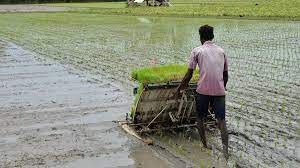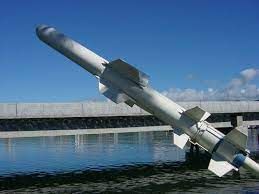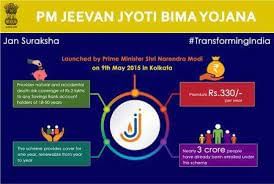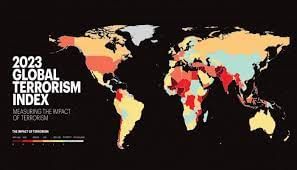UPSC Daily Current Affairs- 18th April 2023 | Current Affairs & Hindu Analysis: Daily, Weekly & Monthly PDF Download
GS-I
Mahad Satyagraha
Why in News?
Recently, Mahad Satyagraha by Ambedkar and the foundation event of the Dalit movement were recalled.
About Mahad Satyagraha :-
- Mahad Satyagraha was first collective protest of untouchables under the leadership of Dr. Bhim Rao Ambedkar.
- Every year, March 20 is observed as Social Empowerment day in India to commemorate the Mahad Satyagraha.
Background:-
- The untouchables were not allowed to use water from Mahad tank.
- In 1926, Municipal Board of Mahad, Maharashtra passed orders to throw open the famous tank of Mahad city to all communities.
- High caste Hindus opposed this order of the Municipal Board.
- In response, Ambedkar organised a conference to support the decision of Municipal Board.
- Ambedkar, in his presidential address, stressed the necessity of rooting out ideas of highness or lowness and inculcating self-elevation through self-help, self-respect and self-knowledge.
- A Satyagraha Conference was organised at Mahad in 1925 which demanded that Hindu society should be organised on the basis of equality and absence of casteism.
- It was also resolved to burn Manusmriti, as according to Ambedkar, it perpetuated the social, economic, religious and political slavery of the untouchables.
Source: Indian Express
Sea of Japan
Why in News?
Russia's Pacific Fleet recently conducted naval defence drills in the Sea of Japan.
About Sea of Japan:
- Sea of Japan (East Sea) is a marginal sea of the western Pacific Ocean.
- It is located in Eastern Asia that is bounded by Japan and Sakhalin Island to the east and by Russia and Korea on the Asian mainland to the west.
- Its area is 377,600 square miles (978,000 square km).
- The sea itself lies in a deep basin, separated from the East China Sea to the south by the Tsushima and Korea straits and from the Sea of Okhotsk to the north by the La Perouse (or Sōya) and Tatar straits.
- To the east it is also connected with the Inland Sea of Japan by the Kanmon Strait and to the Pacific by the Tsugaru Strait.
- It influences the climate of Japan because of its relatively warm waters.
- There are no large islands in the Sea of Japan. Except for the South Korean island of Ulleungdo, all the other small islands are situated near the eastern coast of the sea.
- Major Ports:
- Russia: Vladivostok, Sovetskaya Gavan, Nakhodka, Alexandrovsk-Sakhalinsky, and Kholmsk.
- North Korea: Hamhung, Chongjin, and Wonsan.
- Japan: Niigata, Tsuruta and Maizuru.
Source: Times of India
GS-II
Targets for PM Jeevan Jyoti Bima and PM Suraksha Bima Yojana
Why in News?
Public sector banks (PSBs) have set a target for the sale of flagship government insurance schemes Pradhan Mantri Jeevan Jyoti Bima Yojana (PMJJBY) and Pradhan Mantri Suraksha Bima Yojana (PMSBY) in FY24.
- They have also set goals for other financial inclusion schemes like Mudra Yojana and StandUp India Scheme.
Progress
- There are about 8.3 crore beneficiaries under PMJJBY and 23.9 crores under PMSBY, as of now.
- Since the launch of the schemes in 2015, 15.99 crore enrolment has taken place under PMJJBY, while 33.78 crores under PMSBY as of March 31, 2023.
- To achieve saturation under PMJJBY and PMSBY, the finance ministry launched a three-month campaign, starting April 1.
- Under the campaign, camps are being organised at the Gram Panchayat level across all districts in the country by the banks, with the active participation of the state administration and other ministries of the central government to ensure that the benefits of the two Jan Suraksha schemes reach the masses
About
- Pradhan Mantri Jeevan Jyoti Bima Yojana (PMJJBY): It is a one-year life insurance scheme renewable from year to year offering coverage for death due to any reason.
- Eligibility: Individuals in the age group of 18-50 years having a savings bank or a post office account are entitled to enroll under the scheme. People who join the scheme before completing 50 years of age can continue to have the risk of life cover up to the age of 55 years upon payment of the premium.
- Benefits: Life cover of Rs. 2 Lakh in case of death due to any reason against a premium of Rs. 330/- per annum.
- the finance ministry revised rates from Rs 330 to Rs 436 under PMJJBY effective June 1, 2022.
- Enrolment: Enrolments under the scheme can be done by visiting the branch/ BC point or website of the bank of the account holder or at the post office in case of a post office savings bank account.
- The premium under the scheme is auto-debited every year from the subscriber’s bank account based on a one-time mandate from the account holder.
- Pradhan Mantri Suraksha Bima Yojana (PMSBY):It is a one-year accidental insurance scheme renewable from year to year offering coverage for death or disability due to an accident.
- Eligibility: Individuals in the age group of 18-70 years having a savings bank or a post office account are entitled to enroll under the scheme.
- Benefits: Accidental death cum disability cover of Rs.2 lakh (Rs.1 lakh in case of partial disability) for death or disability due to an accident.
- the finance ministry revised rates from Rs 12 to Rs 20 for PMSBY, effective June 1, 2022.
- Enrolment: Enrolment under the scheme can be done by visiting the branch/ BC point or website of the bank of the account holder or at the post office in case of a post office savings bank account.
- The premium under the scheme is auto-debited every year from the subscriber’s bank account based on a one-time mandate from the account holder.
Source: Economic Times
Global Terrorism Index (GTI)
Why in News?
The 2023 edition of the Global Terrorism Index (GTI) was recently released.
About the Global Terrorism Index (GTI)
- About:
- The Global Terrorism Index (GTI) is a comprehensive study analysing the impact of terrorism for 163 countries covering 99.7 percent of the world’s population.
- The GTI report is produced by the Institute for Economics & Peace (IEP) using data from Terrorism Tracker and other sources.
- GTI Score:
- The GTI produces a composite score so as to provide an ordinal ranking of countries on the impact of terrorism.
- The GTI scores each country on a scale from 0 to 10;
- Where 0 represents no impact from terrorism and 10 represents the highest measurable impact of terrorism.
- The GTI considers deaths, incidents, hostages and injuries from terrorism.
- Aim:
- Given the significant resources committed to counter terrorism by governments across the world, it is important to analyse and aggregate the available data to better understand its various properties.
- One of the key aims of the GTI is to examine these trends.
- It also aims to help inform a positive, practical debate about the future of terrorism and the required policy responses.
- Given the significant resources committed to counter terrorism by governments across the world, it is important to analyse and aggregate the available data to better understand its various properties.
Key findings from the Global Terrorism Index 2023 report
- Deaths & attacks of terrorism:
- Terrorist attacks and deaths caused by them decreased by 28 per cent and 9 per cent respectively, but average deaths per attack increased from 1.3 to 1.7 from the previous year in 2022.
- Attacks have become more deadly with the lethality rising by 26%.
- This is attributed to the Taliban’s transition from terror group to state actor.
- Afghanistan continues to be the country most affected by terrorism.
- Attacks have become more deadly with the lethality rising by 26%.
- Outside Afghanistan, terrorism deaths rose 4% in the rest of the world.
- Terrorist attacks and deaths caused by them decreased by 28 per cent and 9 per cent respectively, but average deaths per attack increased from 1.3 to 1.7 from the previous year in 2022.
- Islamic State (IS) - the deadliest terrorist group:
- Islamic State (IS) and its affiliates remained the world’s deadliest terrorist group in 2022 for the eighth consecutive year, with attacks in 21 countries.
- Sahel and Af-Pak region:
- Deaths from attacks by unknown Jihadists globally are eight times higher than 2017, representing 32% of all terrorism deaths and 18 times higher in the Sahel.
- The Sahel is the most impacted region, representing 43% of global terrorism deaths, 7% more than the year prior.
- Jihadi upheavals in the Sahel and Af-Pak region remain key drivers of the increase in lethality.
- Global trends:
- Declining terrorism in the West is met with intensified attacks in other regions.
- Far-right extremist groups are gaining ground in Europe and North America.
- Terrorism thrives in countries with poor ecologies and climate induced shocks.
- Formalisation of terrorism:
- Many states continue to use armed non-state actors for their own objectives, indicating a worrying trend in the formalisation of terrorism.
- Technology use:
- Drone technology and its use continues to rapidly evolve, especially with groups such as IS, Boko Haram and Houthis.
State sponsored terrorism
- States have been employing armed non-state actors to further their otherwise questionable objectives. For example,
- Russia & Ukraine:
- Violent extremists are belligerents to the ongoing war in Ukraine.
- Chechen fighters who once declared ‘jihad’ against Moscow are fighting for Russia under Ramzan Kadyrov's leadership.
- Islamists who are upset with this and are against Russia have been fighting for Ukraine.
- Turkey:
- Turkey allegedly backs Hayat Tahrir al-Sham (HTS), a breakaway from Da’esh, in Syria because they serve as a proxy to their regional interests.
- China:
- China is also increasingly deploying its Private military and security company (PMSC) along the Belt and Road Initiative (BRI) for security purposes.
- The Chinese, though warily, are courting the Taliban to fulfil their interests in the region.
- Pakistan:
- Pakistan, a long-time proven state sponsor of terrorism, is having to deal with the ghosts that have come back to haunt them in the form of the Tehrik-e-Taliban Pakistan (TTP).
- This trend in the formalisation of terrorist and violent extremist groups by legitimate nation-states does not seem to wane any time soon, which is quite alarming.
Implications for India
- Kashmir:
- The security situation in Kashmir did take a turn for the good after the abrogation of Article 370 with respect to organised terror, but new challenges emerged in the form rise in lone-wolf attacks and increased use of drones for cross-border terrorism.
- Sikh separatism:
- The dormant sentiments of Sikh separatism are increasingly showing signs of revival, with the socio-political situation in Punjab taking a radical turn.
- Cross-border narco-terror networks:
- In both Kashmir and Punjab, a growing trend of increased drug abuse is fuelled by cross-border narco-terror networks.
- Terror drones:
- India is still not adequately equipped to tackle the challenge of terror drones, whose sightings had multiplied significantly in 2022.
Way ahead
- All nations worldwide must keep up with their counter-terrorism efforts and address real or perceived grievances that make radicalisation possible.
- On the virtue of India’s chairmanship of the UNSC’s Counter-Terrorism Committee and its joining of the Shanghai Cooperation Organisation (SCO) concentrating on extensive Counter-Terrorism cooperation through its Regional Anti-Terrorist Structure (RATS), it can take the leading role in tackling terrorist challenges.
Source: Indian Express
GS-III
What are Stablecoins?

Why in News?
The United States Congress recently made an attempt to create a legislative framework for the increasingly popular stablecoins.
About Stablecoins:
- They are cryptocurrencies whose value is pegged, or tied, to that of another currency, commodity, or financial instrument.
- Stablecoins aim to provide an alternative to the high volatility of the most popular cryptocurrencies, including Bitcoin (BTC).
- Unlike cryptocurrencies like Bitcoin, stablecoins’ prices remain steady, in accordance with whichever fiat currency backs them.
- Eg: USDC stablecoin is backed by dollar-denominated assets.
- Benefits:
- They are open, global, and accessible to anyone on the internet.
- They’re fast, cheap and secure to transmit.
What is Cryptocurrency?
- Cryptocurrencies are digital or virtual currencies in which encryption techniques are used to regulate the generation of their units and verify the transfer of funds.
- These currencies operate independently of a central bank.
- The economic transactions underlying cryptocurrency are decentralized, distributed and disbursed.
- The first and most famous cryptocurrency, bitcoin was introduced in 2009.
- Technology:
- Most cryptocurrencies are built on blockchain technology.
- Blockchain is a decentralized and distributed database on a peer-peer network which works on the basis of a consensus mechanism involving every node (computer) on the network.
- Blockchain is a peer-to-peer distributed network that records a public history of transactions without actually recording identities of the parties or the transaction details.
Source: The Hindu
Skills Shortage Hampering Farm Mechanisation

Why in News?
Recently, the National Council of Applied Economic Research (NCAER) released a white paper on ‘Making India a Global Power House in the Farm Machinery Industry’.
Key Highlights:
- NCAER is India’s oldest and largest independent, non-profit, economic policy research think tank.
- Established in New Delhi in 1956, It is one of a handful of think tanks globally that combine rigorous analysis and policy outreach with deep data collection capabilities.
- NCAER has analysed the non-tractor farm machinery industry from both demand and supply side perspectives, bringing out the challenges in the sector, and recommending measures & reforms by benchmarking global practices in their report.
- In India, Farm mechanization is at 40-45 percent, which remains low compared to the rest of the world; in the US it is 95 percent, Brazil 75 percent, and China 57 percent.
About Farm mechanisation:
- Farm mechanisation refers to the development and use of machines that can replace human and animal power in agricultural processes with the end objective of enhancing overall productivity and production with the lowest cost of production.
Significance of Farming in India
Food security:
- Issues like rapid urbanisation, population explosion and climate change increase the risk of food shortage.
- These recommendations are crucial to ensure food security for urban as well as rural communities. This benefit has long been highlighted in arguments for urban farming.
Fulfilling nutrition demand:
- 2010 report by M S Swaminathan Research Foundation, Chennai, notes that 50 percent of women and children in urban areas are anaemic due to lack of adequate nutrition.
- The study also recommends focussing on agriculture.
Poverty alleviation:
- Globally, in 2020, the UN Food and Agriculture Organization acknowledged that urban and peri urban farming can contribute to local food and nutritional needs, enable jobs and reduce poverty.
Demand and Supply-side Challenges:
Lack of adequate Information and Awareness:
- There is a lack of adequate information and awareness amongst farmers about the technology and the management of machinery.
- Consequently, their selection of machinery is poor, often making it a wasted investment.
Stark mismatch:
- The paper reveals a mismatch between what the organised industrial sector is producing, especially in the non-tractors segment, and what the small and marginal Indian farmers want.
- The farm machinery industry is characterised by both demand and supply-side challenges.
Lack of awareness:
- There is a lack of adequate information and awareness amongst farmers about the technology and the management of machinery.
- Consequently, their selection of machinery is poor, often making it a wasted investment.
Skills Shortage:
- It is resulting in a low-equilibrium trap for the industry.
- Village craftsmen, who fall at the bottom of the pyramid in the industry, form the largest group and are the ones who end up largely catering to the Indian farmers in terms of supply, repair, and maintenance of farm machinery.
- On the supply side, micro, small, and medium enterprises (MSMEs) suffer from a lack of skilled personnel.
- Fabrication of agricultural tools and machinery is often done by semi-skilled workers without proper equipment.
The following suggestions are need of hour:
Engaging various institutions:
- The Agricultural Skills Council of India should work at the district level to address skilling shortages on the demand side; public-private partnerships with Custom Hiring Centres may be especially useful.
Addressing demand & supply-side constraints:
- Extension programmes need to be strengthened to address demand-side issues.
- On the supply side, the District Industries Centre should work with local industrial clusters so that ITIs can provide relevant courses with the latest available technical knowledge and skills.
Skilling:
- State agricultural universities, ICAR and other institutes that have tractor training centres, Krishi Vigyan Kendras and industry (through their dealers) should be made responsible for training young farmers/owners/operators on how to select, operate and service farm machinery.
Setting up of Service centres:
- Service centres at the regional and State levels may be promoted in the private and industrial sectors.
- This will alleviate the need for each farmer to own machinery and learn skills to operate the individual machines.
Vocational skilling programmes:
- Dual vocational skilling programmes will greatly benefit industrial clusters located in tier-II and tier-III cities.
- MSMEs should also leverage the Apprentices Policy of the Central Government. This may be a win-win situation for the youth.
Way Forward:
Sustainable mechanization considers technological, economic, social, environmental, and cultural aspects when contributing to the sustainable development of the food and agricultural sector along with improved agricultural practices for increased production and enhanced food security.
Source: The Hindu
Harpoon Missiles

Why in News?
Taiwan recently decided to buy 400 U.S. land-launched Harpoon missiles in the face of rising threat from China.
About Harpoon Missiles:
- It is a U.S.-designed subsonic antiship cruise missile that has been in service since 1977.
- Numerous variants have been produced since its inception, including air-, ship-, and sub-launched versions.
- It is currently in service with the armed forces of more than 30 countries including India.
- Features:
- It is an all-weather, over-the-horizon, anti-ship missile system.
- Propulsion: Turbojet, solid prpellent.
- It has a low-level, sea-skimming cruise trajectory with active radar guidance.
- It is capable of executing both land-strike and anti-ship missions.
- This missile is fitted with a heavy 221-kilogram penetration blast warhead.
- It uses GPS-aided inertial navigation to hit a designated target aimpoint.
- Range: 90-240 km
Source: The Hindu
|
63 videos|5408 docs|1146 tests
|
FAQs on UPSC Daily Current Affairs- 18th April 2023 - Current Affairs & Hindu Analysis: Daily, Weekly & Monthly
| 1. What are the three stages of the UPSC exam? |  |
| 2. What is the significance of GS-I in the UPSC exam? |  |
| 3. What is the purpose of GS-II in the UPSC exam? |  |
| 4. What are the subjects covered in GS-III of the UPSC exam? |  |
| 5. How is the UPSC exam conducted? |  |

























